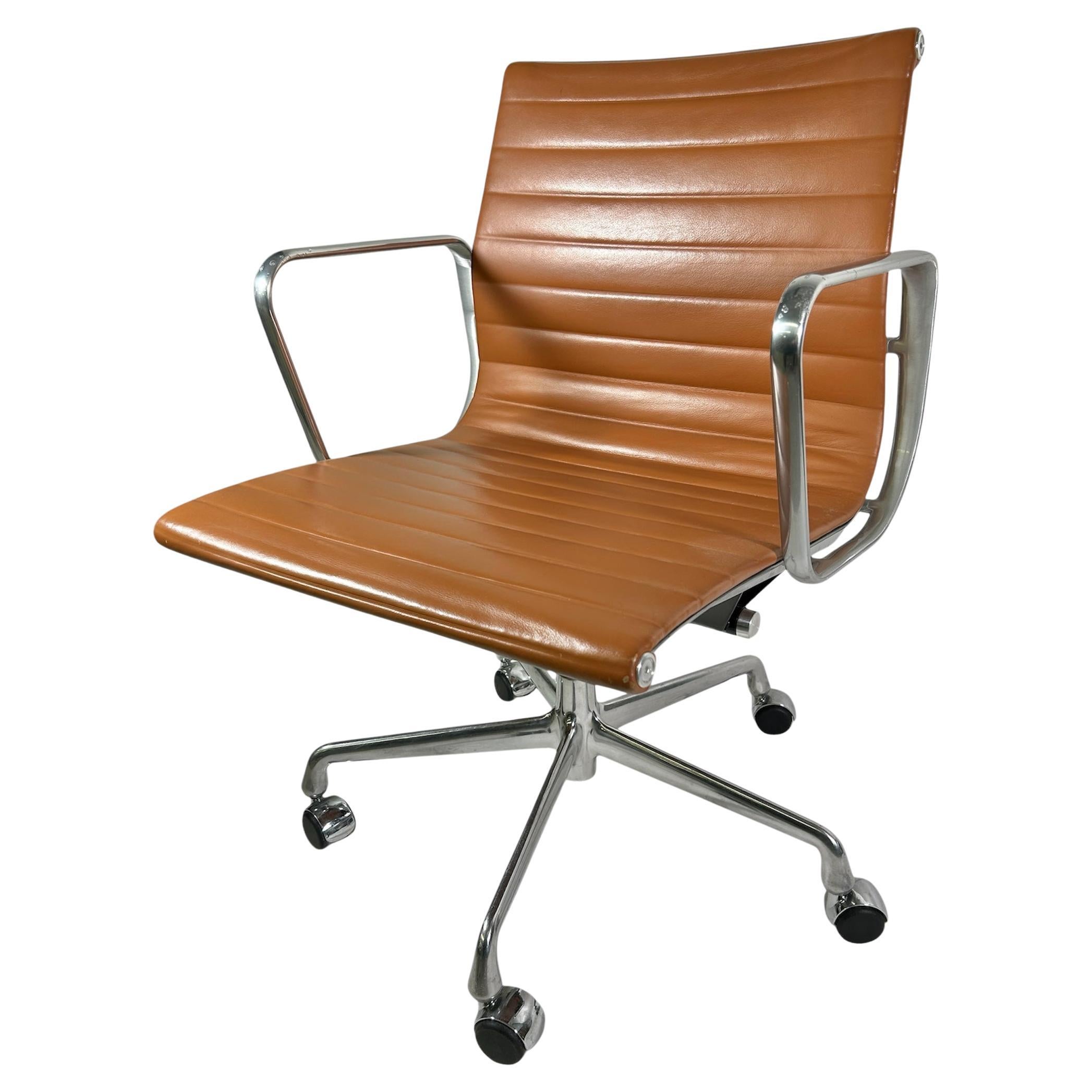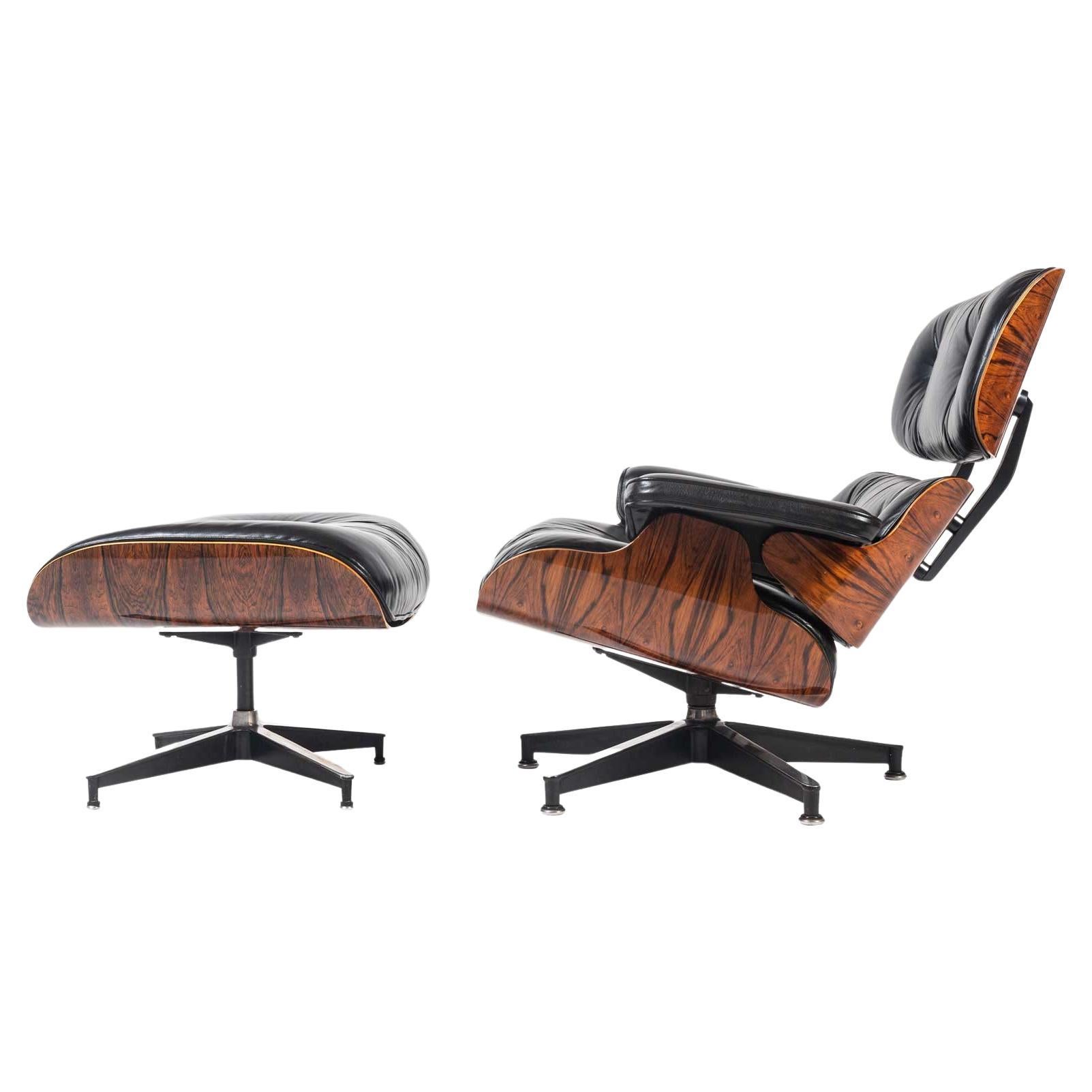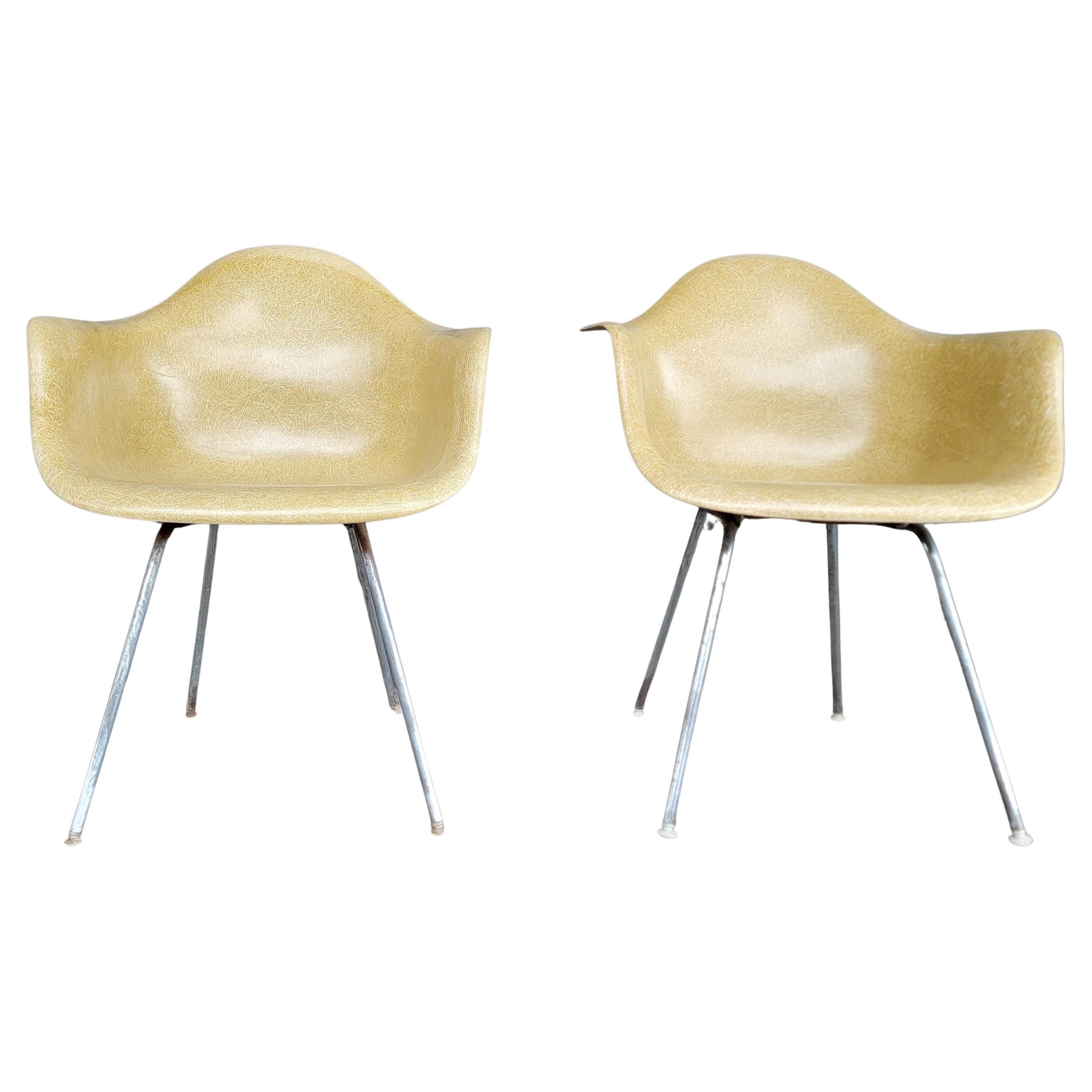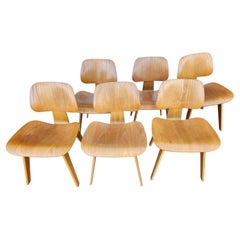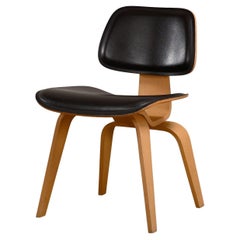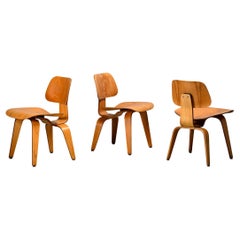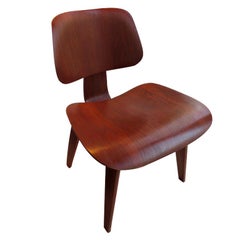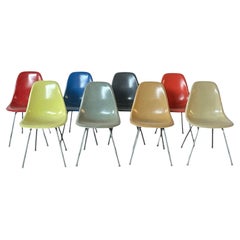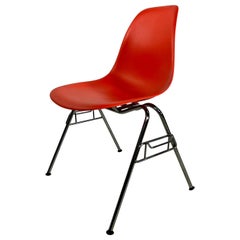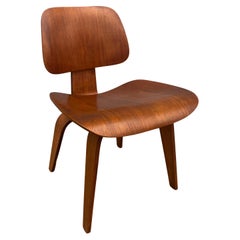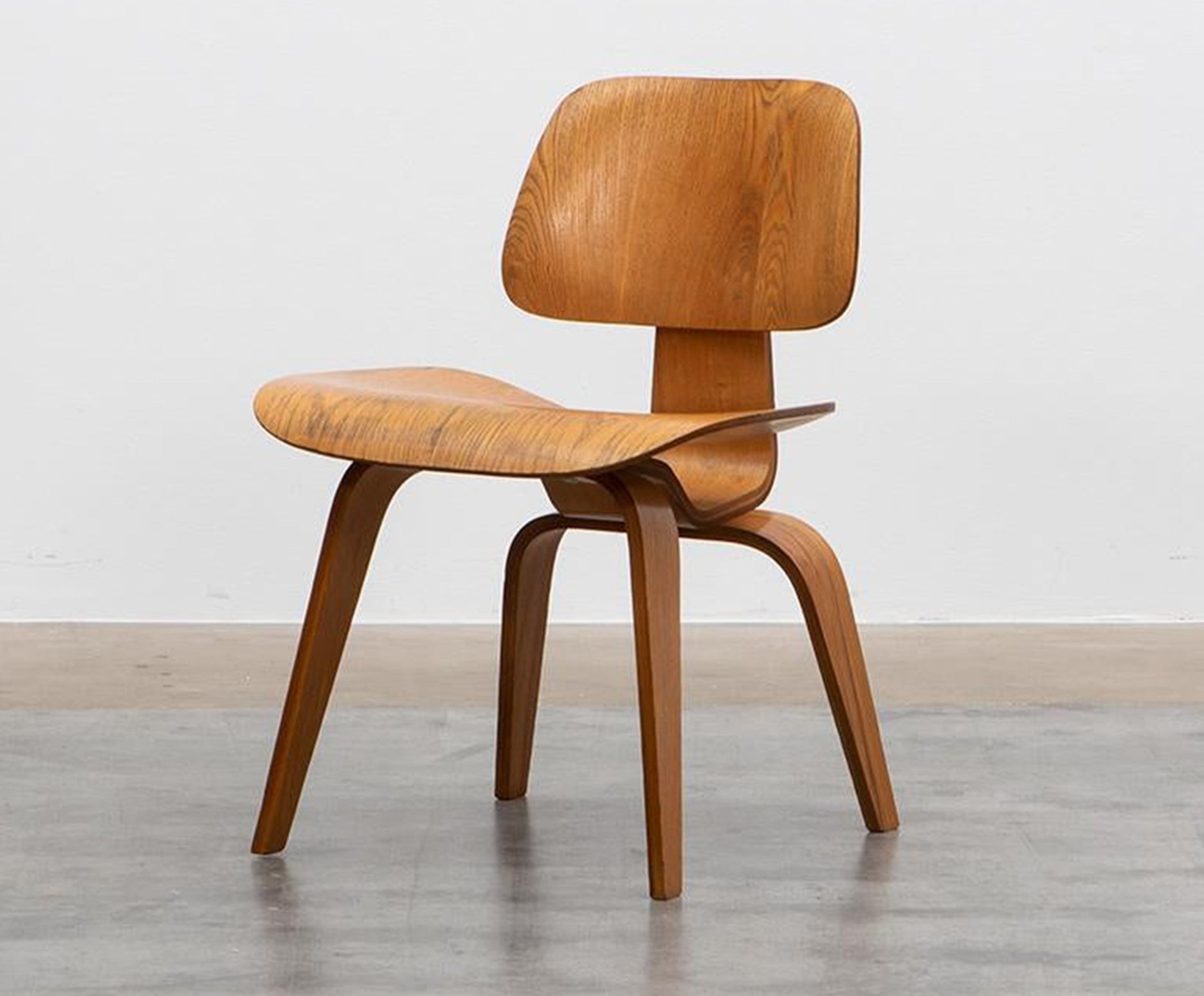
Eames DCW ChairBy Charles and Ray Eames
Although their ubiquitous leather lounge might be more recognizable, there’s arguably no chair that better embodies the design ethos of Charles and Ray Eames (1907–78; 1912–88) than the DCW dining chair. It was introduced at New York City’s Museum of Modern Art in a 1946 exhibition titled “New Furniture Designed by Charles Eames.” (Ray was notably absent from the exhibition title, despite being a full collaborator on the work.)
In its design, construction and manufacturing, the DCW is pure Eames. It was born of functionality and comfort, crafted in a shape that the ever-inquisitive Eameses decided would provide optimal support for a large number of people. “We found that comfort depended more on the perfect molding to the body shape than it did on the way the bone structure was supported,” Charles noted in a 1954 film on the piece. “If the structure was supported properly, the hard and rigid material, like molded plywood, can provide a remarkably high degree of comfort.”
This proper support is the result of the chair’s five distinct parts: a pair of two-legged bases, a bentwood seat, a bentwood back and a long piece of bentwood that connects each of these. Such construction allows for a certain flexibility in movement between the seat and the back without requiring any type of complicated adjustment mechanism.
The Eameses developed the DCW while tinkering with the “Kazam! Machine,” a mechanism they invented to press and mold wood veneer. In their Los Angeles apartment, the couple would place a sheet of wood veneer into the machine, then top it with a layer of glue. After repeating these steps 5 to 11 times and ensuring the layers were set in place, the Kazam! Machine was clamped shut and a bicycle pump inflated a balloon to press the layers into their molded shape. Charles and Ray then cut the mold and sanded each finished shape by hand.
The Kazam! Machine was a direct result of Charles and Ray’s determination to conceive an efficient, inexpensive means of production. Plywood, too, was a significant choice. Not unlike the molded plastic with which the Eameses would experiment, plywood was relatively cheap and easily available, rendering it optimal for the kind of democratic design the couple championed.
The Eames DCW chair has appeared (and continues to appear) in interiors by top designers all over the world. Today, it remains a top seller for Herman Miller — with equal credit given to Charles and Ray.
Eames Dcw
Vintage 1980s American Mid-Century Modern Dining Room Chairs
Ash
21st Century and Contemporary American Mid-Century Modern Dining Room Ch...
Rubber, Wood, Birch
Vintage 1940s German Mid-Century Modern Dining Room Chairs
Leather, Ash
Vintage 1940s American Mid-Century Modern Dining Room Chairs
Rubber, Plywood, Ash
Vintage 1940s American Mid-Century Modern Dining Room Chairs
Rubber, Walnut, Plywood
Vintage 1940s American Chairs
Mahogany
Vintage 1960s American Mid-Century Modern Chairs
Plywood
Mid-20th Century North American Mid-Century Modern Chairs
Walnut
Vintage 1950s American Mid-Century Modern Side Chairs
Plywood
Early 2000s American Dining Room Chairs
Wood
Vintage 1940s American Mid-Century Modern Chairs
Plywood
2010s American Mid-Century Modern Chairs
Wood
Vintage 1950s American Mid-Century Modern Dining Room Chairs
Plywood
Vintage 1940s American Mid-Century Modern Side Chairs
Ash, Plywood
Mid-20th Century American Mid-Century Modern Chairs
Wood
Vintage 1950s American Mid-Century Modern Dining Room Chairs
Ash, Plywood
Vintage 1950s American Mid-Century Modern Armchairs
Walnut
Mid-20th Century American Mid-Century Modern Chairs
Chrome
20th Century Mid-Century Modern Dining Room Chairs
Walnut
20th Century American Mid-Century Modern Dining Room Chairs
Metal
Early 2000s American Mid-Century Modern Dining Room Chairs
Metal
Vintage 1940s European French Provincial Chairs
Straw, Oak
Vintage 1970s Central American Mid-Century Modern Chairs
Metal
Vintage 1950s American Modern Side Chairs
Foam, Walnut, Leather
Mid-20th Century American Mid-Century Modern Dining Room Chairs
Chrome
Vintage 1950s American Mid-Century Modern Dining Room Chairs
Metal, Chrome
Vintage 1960s American Mid-Century Modern Dining Room Chairs
Metal, Steel
Mid-20th Century American Mid-Century Modern Lounge Chairs
Walnut, Plywood
Vintage 1970s Central American Mid-Century Modern Chairs
Metal
Mid-20th Century North American Mid-Century Modern Chairs
Walnut
Late 20th Century North American Mid-Century Modern Dining Room Chairs
Steel
Vintage 1950s American Mid-Century Modern Chairs
Rubber, Walnut
2010s American Mid-Century Modern Dining Room Chairs
Rubber, Plywood
21st Century and Contemporary American Mid-Century Modern Side Chairs
Ash, Plywood
Mid-20th Century American Mid-Century Modern Dining Room Chairs
Plywood
Early 2000s American Mid-Century Modern Armchairs
Plywood
Vintage 1940s American Mid-Century Modern Side Chairs
Plywood, Ash
Vintage 1950s American Mid-Century Modern Chairs
Rubber, Ash
Vintage 1950s American Mid-Century Modern Side Chairs
Plywood
Mid-20th Century American Mid-Century Modern Chairs
Walnut
Mid-20th Century American Mid-Century Modern Dining Room Chairs
Ash, Plywood
Vintage 1950s American Mid-Century Modern Chairs
Plywood
Vintage 1940s American Mid-Century Modern Side Chairs
Oak, Plywood
